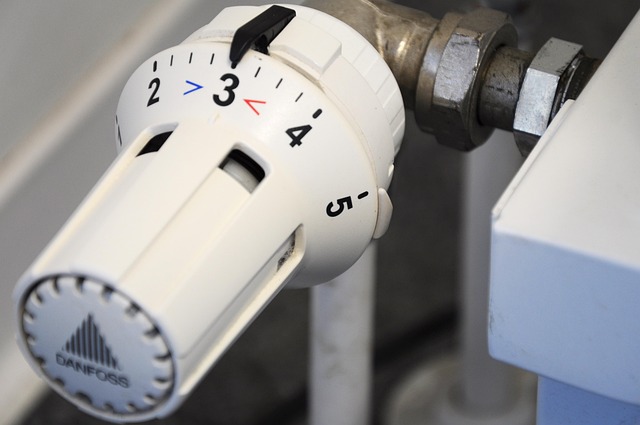Recognizing ignition and burner issues from sounds and soot
Unusual noises and visible soot around a heating appliance are often early indicators of ignition or burner problems. Homeowners and technicians who understand how sound patterns, flame color, and soot accumulation relate to combustion can make safer, better-informed decisions about inspections and upkeep. Early recognition helps maintain efficiency and reduces the risk of hazardous exhaust.

Early clues such as delayed ignition, banging noises, or black soot near a vent often point to ignition timing or burner issues rather than superficial faults. Paying attention to the start-up sequence when the thermostat calls for heat — the ignition delay, the tone of the burner, or any abnormal smell — offers immediate information about combustion and system health. Prompt observation and basic maintenance can prevent reduced efficiency and potential carbon monoxide hazards while guiding diagnostics by local services.
How can furnace and boiler sounds signal problems?
Different sounds correspond to distinct failures. A loud bang at startup usually indicates delayed ignition caused by unburned fuel accumulating before the burner ignites; this can damage heat exchangers in a furnace or boiler. Rattling or clanking often stems from loose access panels or failing blower bearings, while a metallic ping during heat cycles can be thermal expansion in ductwork. High-pitched squeals typically point to worn belts or motors needing lubrication or replacement, and consistent clicking without ignition suggests an ignition control or spark module fault.
Often the timing and repetition of noises help pinpoint the source. Note whether the sound occurs right when the thermostat signals for heat or after the burner has been running for a while. Recording the pattern and describing it to technicians during diagnostics speeds up troubleshooting and reduces the chance of misdiagnosis.
What do soot patterns say about combustion and burner?
Soot near the burner, flue, or venting outlets is a visible sign of incomplete combustion and reduced efficiency. Fine, powdery soot around burner ports often means an improper fuel-air mix or partially clogged orifices; heavier, oily deposits can indicate poor fuel quality or combustion control issues. A healthy combustion process typically produces little to no soot; persistent deposits merit inspection of the burner, pilot system, and combustion chamber.
Flame appearance provides additional evidence: a steady blue flame suggests efficient combustion, while yellow-tipped or floating flames indicate incomplete combustion and the potential for elevated carbon monoxide levels. Because soot can also discolor vents and ducts, periodic visual checks during inspections detect chronic issues before they worsen.
When should thermostat, filters, and inspections be checked?
If ignition is delayed or the system cycles erratically, start with simple checks: verify thermostat settings and batteries, and confirm the programmed schedule. Dirty or clogged filters reduce airflow, forcing the combustion system to run hotter or with an imbalanced air supply, which changes flame behavior at the burner. Replacing filters on schedule maintains consistent airflow and supports combustion efficiency.
Regular inspections are important even when symptoms are subtle. Annual professional inspections should include thermostat calibration, filter condition checks, combustion analysis, and a look at venting. For homes with older equipment, semi-annual checks during peak heating season help identify gradual deterioration and prioritize maintenance tasks.
How do airflow, ducts, and vents affect efficiency?
Proper airflow ensures stable combustion and even heat distribution. Restricted supply or return airflow, obstructed vents, or damaged ducts can starve the burner of combustion air or create back-pressure on exhaust, leading to soot, irregular flame patterns, and reduced efficiency. Sealing major leaks in ducts and keeping vents unobstructed improves system performance and reduces stress on the blower and heat exchanger.
Besides sealing and clearing, inspect duct insulation and routing. Poorly routed ducts can cause uneven temperatures and force the system to run longer, increasing wear. Good ventilation around combustion appliances is critical; ensure vents and flues remain clear of debris, nests, or blockages to maintain safe exhaust pathways.
What diagnostics, lubrication, and upkeep reduce risks?
Comprehensive diagnostics include checking ignition timing, flame shape and color, gas pressure or fuel delivery, flue draft, and exhaust pathways. Many technicians use combustion analyzers to measure oxygen and carbon monoxide in exhaust gases, confirming whether adjustments are needed. Routine lubrication of motors, bearings, and moving parts prevents mechanical noise and premature failures that can indirectly affect burner performance.
Upkeep tasks such as scheduled filter replacement, periodic inspection of the burner and combustion chamber, vent cleaning, and addressing minor repairs promptly extend equipment life and maintain efficiency. If soot, strange sounds, or any smell of combustion persist, arrange for professional diagnostics from qualified local services to determine whether simple maintenance or a more involved repair is required.
Conclusion Observing and interpreting sounds and soot provides actionable insight into ignition and burner health. Combining attentive observation with regular upkeep—clean filters, clear vents, proper lubrication, and routine inspections—helps sustain efficient combustion and minimizes risks including elevated carbon monoxide levels. When patterns point to persistent faults, professional diagnostics clarify the problem and guide safe, effective repairs.





